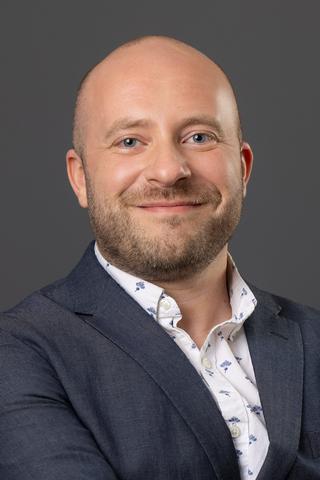
About Me
Faculty Appointments
Assistant Professor - Department of Neuroscience (SMD)
Assistant Professor - Center for Visual Science A&S (RC) - Joint
Credentials
Post-doctoral Training & Residency
Associate Research Scholar, Princeton Neuroscience Institute, Princeton University, Princeton, NJ
Advisor: Dr. Sabine Kastner 2016 - 2020
Postdoctoral Fellow, Princeton Neuroscience Institute, Princeton University, Princeton, NJ
Advisor: Dr. Sabine Kastner 2012 - 2015
Postdoctoral Fellow, Departments of Neuroscience and Pediatrics, Albert Einstein College of Medicine, Bronx, NY and Center for Visual and Cognitive Neuroscience, North Dakota State University, Fargo, ND
Advisors: Dr. John J. Foxe, Dr. Mark E. McCourt 2011 - 2012
Education
PhD | City University of NY, City College. Neuroscience. 2011
BA | Hamilton College. Neuroscience. 2001
Awards
Searle Scholars Fellowship. 2022
CUNY Research Grant for Doctoral Students. 2009
CUNY Graduate Center Science Fellowship. 2006 - 2011
RTI International Highly Published Author and Outstanding Paper Awards. 2004
RTI International Annual Awards for Outstanding Contributions to Strategic Goals. 2003 - 2004
Senior Prize in Neuroscience, Hamilton College. 2001
New York Science Education Program Summer Research Grant, Hamilton College. 2000
Dixon-Comstock Scholarship, Hamilton College. 1997 - 2001
Research
Research questions: How does the brain navigate our complex environments? In a busy street scene, for example, the brain relies on filtering mechanisms. Two primary functions interact to make this filtering possible: (1) spatial attention (enhanced or suppressed sensory processing) and saccades (exploratory shifts of gaze). A shared network of brain regions, known as the “attention network,” directs both. But how?
Key findings and new investigations: We recently demonstrated that these sensory and motor functions alternate over time (approximately every 250 ms). We continue to investigate the temporal dynamics of attention-related functions. This work covers the balance not only between sensory and motor functions, but also between enhancement (of behaviorally relevant information) and suppression (of distracting information). We are further investigating whether such temporal or rhythmic coordination is a more general mechanism in the brain for resolving potential functional conflicts, maintaining cognitive and representation flexibility.
Clinical applications: We hope that our research will provide a new lens through which to investigate and treat brain disorders marked by abnormalities in cognitive flexibility, such as attention-deficit hyperactivity disorder (ADHD) and obsessive-compulsive disorder (OCD).
Publications
Journal Articles
Abdalaziz M, Redding ZV, Fiebelkorn IC
Current biology : CB.. 2023 April 17 Epub 04/17/2023.
Aussel A, Fiebelkorn IC, Kastner S, Kopell NJ, Pittman-Polletta BR
eLife.. 2023 January 3112 Epub 01/31/2023.
Fiebelkorn IC
Journal of cognitive neuroscience.. 2022 October 27 :1-7. Epub 10/27/2022.
Fiebelkorn IC
The European journal of neuroscience.. 2021 May 26 Epub 05/26/2021.
Fiebelkorn IC, Kastner S
Neuron.. 2020 October 20 Epub 10/20/2020.
Kastner S, Fiebelkorn IC, Eradath MK
Current opinion in neurobiology.. 2020 September 1465 :10-19. Epub 09/14/2020.
Fiebelkorn IC, Kastner S
Annual review of psychology.. 2020 January 471 :221-249. Epub 09/12/2019.
Fiebelkorn IC, Kastner S
Trends in cognitive sciences.. 2019 February 23 (2):87-101. Epub 12/24/2018.
Fiebelkorn IC, Kastner S
Neuron.. 2019 January 16101 (2):201-203. Epub 1900 01 01.
Fiebelkorn IC, Pinsk MA, Kastner S
Nature communications.. 2019 January 1510 (1):215. Epub 01/15/2019.
Fiebelkorn IC, Pinsk MA, Kastner S
Neuron.. 2018 August 2299 (4):842-853.e8. Epub 1900 01 01.
Helfrich RF, Fiebelkorn IC, Szczepanski SM, Lin JJ, Parvizi J, Knight RT, Kastner S
Neuron.. 2018 August 2299 (4):854-865.e5. Epub 1900 01 01.
Mercier MR, Molholm S, Fiebelkorn IC, Butler JS, Schwartz TH, Foxe JJ
The Journal of neuroscience : the official journal of the Society for Neuroscience.. 2015 June 335 (22):8546-57. Epub 1900 01 01.
Fiebelkorn IC, Saalmann YB, Kastner S
Current biology : CB.. 2013 December 1623 (24):2553-8. Epub 12/05/2013.
Mercier MR, Foxe JJ, Fiebelkorn IC, Butler JS, Schwartz TH, Molholm S
NeuroImage.. 2013 October 179 :19-29. Epub 04/26/2013.
Fiebelkorn IC, Foxe JJ, McCourt ME, Dumas KN, Molholm S
Cortex; a journal devoted to the study of the nervous system and behavior.. 2013 May 49 (5):1259-67. Epub 05/03/2012.
Butler JS, Foxe JJ, Fiebelkorn IC, Mercier MR, Molholm S
The Journal of neuroscience : the official journal of the Society for Neuroscience.. 2012 October 3132 (44):15338-44. Epub 1900 01 01.
Snyder AC, Fiebelkorn IC, Foxe JJ
The European journal of neuroscience.. 2012 March 35 (6):960-7. Epub 1900 01 01.
Fiebelkorn IC, Foxe JJ, Butler JS, Molholm S
Experimental brain research.. 2011 September 213 (2-3):167-74. Epub 04/09/2011.
Fiebelkorn IC, Foxe JJ, Butler JS, Mercier MR, Snyder AC, Molholm S
The Journal of neuroscience : the official journal of the Society for Neuroscience.. 2011 July 631 (27):9971-81. Epub 1900 01 01.
Butler JS, Molholm S, Fiebelkorn IC, Mercier MR, Schwartz TH, Foxe JJ
The Journal of neuroscience : the official journal of the Society for Neuroscience.. 2011 March 231 (9):3400-6. Epub 1900 01 01.
Fiebelkorn IC, Foxe JJ, Schwartz TH, Molholm S
The European journal of neuroscience.. 2010 May 31 (10):1737-43. Epub 1900 01 01.
Fiebelkorn IC, Foxe JJ, Molholm S
Cerebral cortex.. 2010 January 20 (1):109-20. Epub 1900 01 01.
Armour BS, Finkelstein EA, Fiebelkorn IC
Preventing chronic disease.. 2009 July 6 (3):A84. Epub 06/15/2009.
Finkelstein EA, Fiebelkorn IC, Wang G
Obesity research.. 2004 January 12 (1):18-24. Epub 1900 01 01.
Finkelstein EA, Fiebelkorn IC, Wang G
Health affairs.. 2003 Suppl Web Exclusives :W3-219-26. Epub 1900 01 01.
Books
The New Handbook of Multisensory Processing (Second Edition) (2012)
Chapter: Attention and Multisensory Feature Integration
Authors: Fiebelkorn IC, Foxe JJ, Molholm S
Publisher: MIT Press 2012